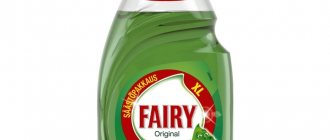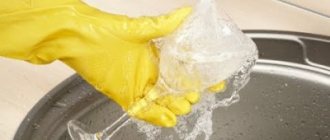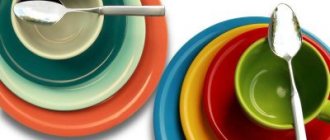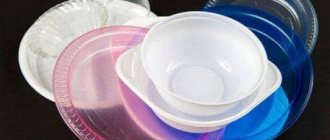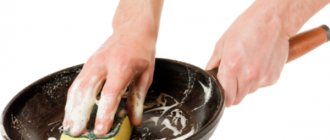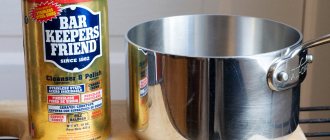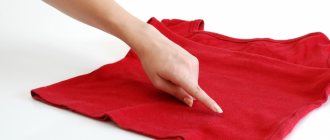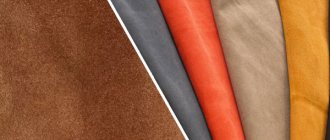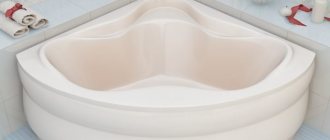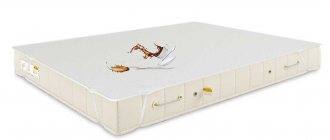Cups, plates, saucers, and other kitchen utensils covered with yellow spots and stains look unattractive. Eating or drinking from such containers is unhygienic and unsafe. The plaque that appears must be removed, and it is not at all necessary to use aggressive chemical compounds.
At home, you can quickly remove yellowness using improvised means and folk recipes. “Chemistry” will only be needed to clean old dirt, although experienced housewives have their own “weapons” for such cases.
Ceramics
Plaque forms on ceramic dishes over time, and it accumulates especially quickly in porcelain folds of plates and cups of complex configuration. The appearance of yellowness can be avoided by washing dishes in the dishwasher using special detergents.
If you don’t have a dishwasher, yellow stains from plates can be removed using:
- baking soda;
- chalk;
- white toothpaste;
- pemolux;
- melamine sponge.
When using powders or pastes, use an abrasive cloth or the appropriate side of a double-layer sponge to enhance the effect. You can also use regular dishwashing detergent, but wipe off dirt not with a foam sponge, but with a brush with stiff polymer bristles.
Steel wool should only be used to clean surfaces without a pattern, so as not to damage the paint.
We will separately consider how to bleach dishes if there is a lot of them. To simplify the task, use washing powder for hand washing. The powder is dissolved in a container with very hot water, then all ceramic plates and cups are immersed there for 2-3 hours. Then thoroughly wash each item in warm water - there should be no traces of powder left on the surface.
Dishes in a solution of washing powder will be cleaned faster if you boil them in a metal container. It is enough to boil for 15-20 minutes. When cleaning by boiling, washing powder can be replaced with baking soda if the products do not have gold plating. Please note that the dishes cannot be removed immediately; let them cool along with the solution.
Household chemicals for old grease on dishes
Boiling a soap solution in a dish will help remove old grease
. Washing off old oil stains using simple store-bought products - Comet, Fairy, Prill and others - is unlikely to be possible without prolonged scrubbing. It is necessary to purchase stronger versions of cleaners. But they are expensive and not always safe for the skin of your hands and your breath. They must be used strictly according to the instructions.
Long-term soaking in a simple soap solution is also not able to clean stubborn dirt. But they can still combat old deposits. You just need to act differently:
- The solution of laundry soap is poured into a large container and dishes with traces of old fat are placed there.
- The water is brought to a boil and the items are kept on low heat for 30–40 minutes.
- After turning off the gas, close the container with a lid and pour out the cooled solution.
At the end, the dishes need to be treated with a sponge to remove any remaining oil stains.
Boiling with laundry soap is suitable for all types of kitchen utensils, except for plastic products.
Enameled products
It is not recommended to clean enamel cookware with abrasives - over time, the enamel coating gets scratched, as a result, plaque settles on the surface faster, yellow and dark spots appear that are difficult to remove.
To clean enamel-coated cookware, use baking soda and regular detergents. Soda ash will help to bleach an enamel pan, bowl or ladle - soak the dishes for an hour and a half in a very hot solution (25 g of soda ash is required for 1 liter of water).
A persalt solution (1 tsp per 3 liters of water) is also suitable for bleaching - you need to boil enamel products in it for an hour and let it cool along with the solution. Then the dishes are thoroughly washed with warm water.
Useful tips
Although all folk methods of cleaning plates at home involve the use of improvised means that are harmless to health, when using them you should still adhere to basic safety rules:
- When using any of the products, protect the skin of your hands with rubber gloves. They will help prevent allergic reactions and irritating effects of acids.
- To quickly get rid of the pungent odor of the substances used, open the kitchen window before starting cleaning procedures.
- To use folk cleaning remedies, it is best to take a new sponge or use a tool that you will not need in the future.
Aluminum utensils
Aluminum cookware is not easy to keep in perfect condition - stains form on the surface of the metal upon contact with certain substances and products, and stains from hard water.
Pots and other utensils made of aluminum should not be treated with a cleaning agent with abrasive properties (chalk, pemolux, salt, sand), steel wool, brushes, or melamine sponge, as this will cause scratches on the surface. Chlorine-containing detergents are also prohibited - they cause dark stains on the metal.
Aluminum dishes are washed with a soft cloth, a foam sponge, foam or gel detergents, soap shavings, and a solution of laundry soap.
To remove dark spots, use acid - lemon juice or citric acid solution, white or apple cider vinegar. Effective remedies also include ammonia and cream of tartar. The list of folk remedies includes cucumber and cabbage pickle, Coca-Cola, kefir. Also, stains are wiped with a fresh cut of the onion.
To clean aluminum utensils, you can use white toothpaste and soda. Silicate (stationery) glue will help add shine to the pots - boil the dishes in an aqueous solution for 12-20 minutes, allow to cool without removing them from the container, and then rinse with cool water.
Technical compositions for cleaning dishes from old grease
An effective composition for removing burnt fat.
Serious fatty layers and thick deposits can be removed using substances that are known, but are not always at hand.
Soap with PVA glue
This original composition, with prolonged exposure, can cope with any fat layer. The quantities used are based on 5 liters of liquid.
- Add 100 ml of glue and half a bar of finely shaved laundry soap or dishwashing foam to boiling water.
- The components are mixed until completely dissolved.
- The item to be washed is placed in the resulting composition.
- The liquid is maintained at a low boil for 2–4 hours.
- Clean the dishes with regular detergent.
It is necessary to ensure that the solution completely covers the container at all times. To do this, you need to periodically add water.
Hydrogen peroxide
Burnt food residues and soot on the outside of frying pans are removed by combining this substance with soda.
The mixture is prepared in the required quantity by bringing the concentration to the state of liquid sour cream. Apply a thick layer to the burnt surface. The dishes are placed in an airtight container or wrapped in polyethylene.
After half an hour or an hour, the softened carbon deposits are removed with a stiff brush or sponge, depending on the material of the dishes.
Activated carbon
With its help, small layers of soot or burnt areas are removed. Several carbon tablets are crushed into powder and poured onto a moistened, contaminated surface. After an hour, the dishes are washed with water and cleaned with soap or gel.
Features
The purpose of baking soda should not be confused with soda ash. The second is not only not used in the process of preparing food, but is preferably kept separately from food. This precaution can be explained simply - its alkaline effect is much stronger.
This is the reason why purifying objects gives much more tangible results. If we compare these powders with each other, then visually the structure of the carbonate is quite loose compared to sodium bicarbonate.
It is worth protecting yourself and your loved ones from getting the cleaning product into the body so as not to cause severe enough poisoning.
To do this, it is enough to have a separate storage container and make an appropriate bright marking on it with the inscription.
How can you eliminate old greasy plaque?
To quickly clean glassware from grease, including washing off old sunflower oil, it is best to use specialized household chemicals. We list the best store products:
- Fairy;
- Myth;
- Help;
- VOX Drop;
- Synergic;
- AOC.
Experienced housewives also wash cast iron, aluminum, plastic dishes and stainless steel with detergents.
Chlorine solution (in other words - whiteness)
Chlorine solution is popular among housewives. Its properties allow it to be used in a variety of situations, especially if you need to clean things made of glass or similar materials. Whiteness can solve even a serious problem in the form of stains or plaque that has lasted for many years. This also applies to black carbon deposits that appear on frying pans or bowls and other containers in which they fry or steam. Plaque caused by tomato juice, milk, and cereals can be easily removed. Despite the strong impact, whiteness does not harm the surface, which is important for preserving the properties of the dishes. It is recommended to use whiteness in tablets rather than liquid form. This makes it easier to calculate the dosage.
To clean 1 pan, 1 tablet is enough. 50 minutes or an hour is enough for the substance to take effect. It is advisable to preheat the water. If the whiteness is used in liquid form, then the volume of one bottle cap is enough.
Important! When using strong chemicals, particularly bleach, the recommended time or concentration should not be exceeded to maximize effectiveness.
After using white, it is recommended to thoroughly wash the dishes with warm water.
How to organize vintage dishes
When it becomes necessary to revive old dishes, the best way to do this is with a dishwasher. However, if the dishwasher does not wash yellow stains well, do not despair. There are several proven methods that will allow you to quickly wash dishes by hand:
- Soda water. First, you will need to pour boiling water into the boiling water and add baking soda there at the rate of sixty grams per liter of liquid. You need to load the soiled utensils into the resulting solution and leave it there for a couple of hours. After the specified time has passed, wash as usual.
- Mustard powder. The method of carrying out the hygiene procedure is identical to the previous one, only mustard must be used instead of soda.
Using these folk remedies, you can easily remove yellow stains and dried-on food particles.
What causes grease stains to form?
Even with regular cleaning of dishes, it is not possible to avoid such troubles. A yellow coating becomes noticeable on the plates. The reasons for this may lie in the following:
- tap water is too hard;
- the dishes were washed with ingredients of inadequate quality;
- washing was carried out using cold water;
- the plates were not washed thoroughly.
To solve the problem, you can use strong chemicals. But this is not always so necessary, since cleaning dishes from fat is also possible using home methods. However, such methods are often more effective.
Mustard powder
Dry mustard is a cheap natural remedy that our grandmothers used. And since the substance is of plant origin, its use is not harmful to health.
Pour warm water into a large container and dissolve several large spoons of dry mustard in it. Dip things into the solution and leave for an hour. Then take it out, scrub it with a kitchen sponge, and rinse under the tap.
How to tidy up a frying pan
With frequent use, it is not surprising that the pan may burn or become coated with a layer of grease. Let's consider what to do in such a situation.
How to clean old grease from a frying pan
If you need to wash a copper frying pan and remove grease from its surface, you can use one of the following products:
- household chemicals, for example, Cinderella;
- nine percent table vinegar and lemon;
- soap solution.
How to clean the lid
To tidy up the lid, you can soak it for fifteen minutes in a solution of ammonia. To do this, you need to dissolve ten milliliters of a caustic substance in two liters of water. After soaking, the lid will need to be washed using specialized products. This method is also suitable for removing the sticker.
How to remove dirt from the back side
If you need to remove greasy deposits from the back of plates or salad bowls, clean them with regular citric acid. To do this you will need:
- slightly moisten the contaminated surface;
- sprinkle it liberally with food additive;
- after fifteen to twenty minutes, rinse with clean water.
Active acid will not only remove dirt, but also return the dishes to their original white color.
Laundry soap
Wash the plates with a soapy sponge and rinse under cold water. Treat grooves, patterns, and other hard-to-reach places with a soft toothbrush.
Soap can also be used to clean a dirty ceramic pan. Grate half the piece into a container, fill it with water, and put it on the fire. After the solution boils, boil for another half hour. Turn off the burner, cover the vessel with a lid, and wait until it cools down. Then drain the liquid and clean the inside with a sponge.
